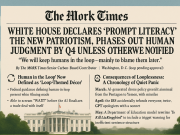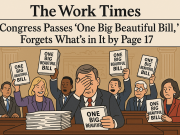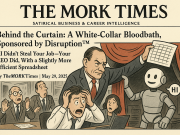Leadership Shock in Tokyo: What a Pro-Loose Turn Means for Work, Wages and Corporate Strategy
A surprise leadership twist in Japan’s ruling circles has pushed markets into a fresh realization: a move toward looser fiscal policy and a rethink at the central bank can ripple through currencies, borrowing costs and — crucially for our Work community — the way companies hire, invest and pay people.
The Moment: A Political Turn and a Market Jolt
In the space of a few trading sessions, markets repriced an outcome many had considered marginal. A candidate advocating larger fiscal packages and tolerance for more public debt rose to prominence. Traders reacted swiftly: Japanese government bond yields adjusted, the yen weakened, and the dollar leapt higher. For anyone thinking of policy as distant from the office or factory floor, this moment is a reminder that political signals translate fast into capital, cost and compensation.
Why a Pro-Loose Stance Matters
At its core, a pro-loose fiscal stance means the public sector is prepared to spend more, borrow more and tolerate higher debt levels to stimulate demand. That can be a deliberate strategy to lift growth, ignite inflation or backstop certain industries. When coupled with a central bank reconsidering ultra-accommodative policies — perhaps tolerating higher yields or easing a negative-rate orthodoxy — the financial blueprint for companies changes:
- Debt issuance expectations rise: more government bond supply can pressurize yields upward.
- Currency swings intensify: a softer yen raises import costs and positions exporters for revenue advantages.
- Inflation expectations shift: businesses must reconsider pricing, wages and contract structures.
Immediate Market Mechanics: From Bonds to the Dollar
Here’s the chain reaction that investors and corporate treasurers observed. Political signals broaden expectations for higher sovereign issuance. Bigger supply, especially if paired with a central bank stepping back from yield suppression, tends to lift yields. Higher yields in a major economy can strengthen its currency — but when compared against the dollar and a market that anticipated different policy, the adjustment can look abrupt. The dollar’s surge is not simply a function of domestic U.S. policy but also of relative shifts and repositioning across global portfolios.
For businesses, rapid moves in interest rates and FX rates matter because they touch financing costs, lease rates, pension valuations, and the profit and loss lines on cross-border contracts.
What This Means for Work: Employers, Employees and the Flow of Talent
Workplaces do not operate in a vacuum. The interplay of fiscal policy and central bank attitudes reshapes the incentives and constraints facing organizations and people.
- Wage dynamics: If looser fiscal policy feeds demand and nudges inflation higher, wage pressure can follow. Companies will confront tougher choices about pay adjustments, bonus frameworks and indexation clauses in contracts.
- Hiring and retention: Higher growth expectations can accelerate hiring in some sectors — construction, infrastructure, manufacturing — while rising input costs may force others to pare back recruiting or shift to automation.
- Cost-of-living and compensation design: A softer currency raises the cost of imports, affecting everything from fuel to components. Compensation systems may need more agile cost-of-living allowances or localized pay reviews.
- Corporate finance and investment: Changes in bond yields and the cost of capital alter investment thresholds. Projects that looked viable under very low rates might need recalibration if borrowing costs edge up.
- Pension funds and benefits: Higher yields can improve valuation dynamics for some pension schemes, but volatility complicates long-term funding plans and benefits design.
Sectoral Winners and Losers — A Practical View
Not all industries respond the same way. The Work community should watch where demand may grow and where pressure will tighten.
- Exporters: A softer yen can lift overseas revenue in local-currency terms, creating capacity to invest in hiring or bonuses. Expect exporters to revisit pricing and hedging strategies.
- Import-reliant firms: Retailers, airlines and manufacturers dependent on imported inputs may face margin squeezes unless they can pass costs through to consumers.
- Construction and infrastructure: Public investment can spur job creation, subcontracting opportunities and demand for skilled labor.
- Financial services: Banks, asset managers and corporate treasuries navigate revised yield curves and hedging needs — shifting the demand for fixed-income and FX specialists.
How Companies Should Respond — Actionable Steps for Leaders
Uncertainty becomes manageable when organizations adopt a few disciplined responses. For the Work community — HR leaders, CFOs, operations heads, and managers — the following actions sharpen resilience.
- Stress-test payroll scenarios: Model wage and benefits expense under alternate inflation and exchange-rate paths. Identify breakpoints where profitability or hiring plans must change.
- Revisit compensation architecture: Build flexibility into pay cycles, bonus triggers and indexation. Consider staggered wage reviews and localized adjustments tied to cost-of-living movements.
- Hedge intelligently: For firms with material FX exposure, revisit hedging programs. Balance short-term protection with longer-term strategic positioning.
- Realign hiring priorities: Prioritize roles that increase resilience — supply-chain managers, procurement, digital automation, and skills that enable cost control.
- Lock in financing where sensible: If higher yields are expected, securing favorable rates now for key projects can be prudent. Conversely, maintain optionality for uncertain timelines.
- Communicate transparently: Market shifts can create anxiety. Clear, candid communication about how the company plans to respond preserves trust and morale.
Scenario Planning: Three Paths Forward
Preparing for multiple plausible futures slows reaction time when volatility arrives. Consider three scenarios and their implications for work:
1. Accelerating Stimulus and Managed Central Bank Pivot
Public spending lifts demand, the central bank tolerates gradual yield normalization, and inflation trends modestly higher. Effects: hiring picks up, wage bargaining strengthens, and import-driven sectors adjust pricing. Strategy: invest in workforce expansion, prioritize retention in skills-scarce areas, and ensure benefits remain competitive.
2. Short-Lived Policy Shock and Market Recalibration
Initial market moves prove transient; yields stabilize and the currency retraces. Effects: short-term operational disruptions and one-off cost pressures. Strategy: avoid knee-jerk structural changes; deploy temporary measures such as short-term hedges and targeted hiring freezes.
3. Persistent Fiscal Expansion with Higher Rates
Fiscal expansion persists and yields settle at a higher baseline. Effects: long-term inflation expectations rise, borrowing becomes more expensive, and capital allocation shifts. Strategy: reprice long-duration projects, invest in productivity-enhancing technology, and consider sourcing adjustments.
Talent, Technology and the Future of Work
A changing macro picture accelerates trends that were already reshaping work. When costs rise, automation and digital transformation move from ‘nice to have’ to essential. At the same time, firms experiencing demand growth face the pressure to find talent — not just more people, but people with the skills to modernize.
Leadership that pairs investment in technology with skill development will capture both productivity gains and employee loyalty. Apprenticeships, accelerated reskilling and hybrid work can become strategic levers for both recruitment and cost management.
Global Ripple Effects: Not Just a Domestic Story
Because capital flows and currency valuations are comparative, policy shifts in one large economy send cross-border signals. Multinational employers will reassess where to base supply chains, how to price goods, and where to locate investment. For workers, this can mean new job opportunities in export-led sectors or increased pressure in industries squeezed by import costs.
What to Watch Next
Leaders should monitor a handful of indicators that presage material changes for the workplace:
- Government bond issuance calendars and yield curve movements.
- Central bank communications for shifts in policy tolerance and guidance.
- Currency volatility and the pace of yen depreciation or appreciation.
- Inflation prints and wage growth metrics across sectors.
- Labor market tightness indicators and sectoral hiring trends.
A Call to Action for the Work Community
Macro surprises are not invitations to panic; they are tests of organizational design. The leaders who win this chapter will be those who can translate macro awareness into micro action — rapid scenario planning, nimble compensation systems, targeted hiring, and investments in productivity. This is a moment to be strategic about where to protect people, where to invest in growth, and where to build optionality into plans.
Markets may have been surprised by a leadership shift in Tokyo, but workplaces can prepare. By seeing policy moves not as distant noise but as inputs into everyday decisions about pay, hiring and investment, organizations can turn volatility into an opportunity to strengthen resilience and to align their workforce for the next phase of growth.





























